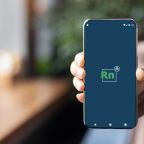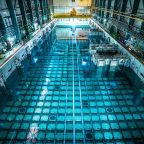Search results

Carbohydrates, fats, proteins, minerals, vitamins and water are among the nutrients that the human metabolism needs to live. Natural or artificial radioactive materials also find their way into food in various ways. In order to calculate the radiation dose, the quantities of certain food consumed are used. Researchers at GRS have analysed consumption studies and recorded the quantities of different food groups consumed in Germany according to region and age.
The Russian invasion is affecting the lives and safety of people in Ukraine on many levels. With the capture of the nuclear power plant sites at Chernobyl - which is now back under Ukrainian control - and Zaporizhia, nuclear facilities have also been included in the hostilities and have therefore increasingly become the focus of public attention. GRS has been in close professional contact with Ukrainian partner organisations for decades, whereby the security of the facilties, i.e. their physical protection, also plays a role. On behalf of the Federal Foreign Office, GRS is working with Ukrainian and national partners to implement specific measures that contribute to improving the security of the facilities there.

Since the annexation of Crimea in 2014, GRS has been working with Ukrainian partners to strengthen the security of nuclear facilities in the country. The projects are funded by the German Federal Foreign Office (AA). In our interview, Dr Stephan Theimer, who heads one of these projects, talks about the challenges that the war poses for day-to-day work, what the current situation means for the security of the facilities, and what he would like to see in future cooperation.
C.-L. Zhang, A. Rogalski, O. Czaikowski
A. Schneider, N. Conen, A. Gehrke, J. Hilbert, M. Knodel, K.-P. Kröhn, M. Lampe, L. Larisch, B. Lemke, A. Nägel, T. Schön, F. Salfelder, M. Stepniewski, G. Wittum, H. Zhao

In Germany, around 1.1 million people live in so-called radon-prone areas. In these regions, a high radon concentration can be expected in significantly more buildings than the national average. The new GRS "Radon Dose" app estimates the personal radiation dose at the places of residence and work, based on measured or estimated radon levels.

Last week, the Élysée Palace confirmed that the French reprocessing plant at La Hague is to be expanded. Extensive investments are planned in this context. There have already been plans since 2020 to build another storage pool on the plant site. At La Hague, there is still radioactive waste from Germany, which may be returned this year.
K. Wieczorek (GRS), K. Emmerich (KIT-CMM), T. Nagel (TUBAF), E. Bakker (KIT-CMM), R. Diedel (SSKG), M. Furche (BGR), J. L. García-Siñeriz (Amberg), U. Glaubach (IBeWa), J. Hesser (BGR), M. Hinze (GRS), M. Hofmann (TUBAF), D. Jaeggi (swisstopo), F. Königer (ISU), J. C. Mayor Zurdo (Enresa), L. Räbiger (IBeWa), M. Rey Mazón (Amberg), C. Rölke (IfG), P. Schädle (ENSI), R. Schuhmann (ISU), H. Shao (BGR), S. Tuñón (Amberg), M. V. Villar Galicia (Ciemat), T. Wilsnack (IBeWa), R. Yeatman (BDS)

On 26 April 1986, the most serious nuclear accident since the beginning of the use of nuclear energy occurred at the Chernobyl nuclear power plant in Ukraine. Due to a series of operating errors and the special features of the reactor type, the power output rose sharply (causing the coolant to suddenly vaporise), the reactor core was completely destroyed and the graphite it contained caught fire. Around eight tonnes of radioactive fuel were released into the environment. To this day, there is an exclusion zone within a radius of 30 kilometres. The following article explains what happened on site during last year and how GRS supported the work there.
S. Hagemann